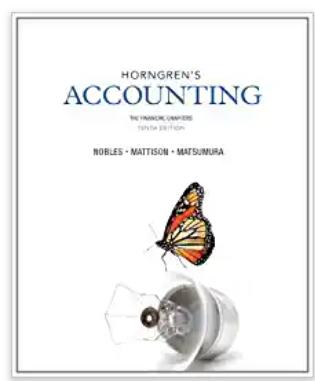Question
https://www.google.com/search?q=texas+cafr&oq=texas+c&aqs=chrome.1.69i57j0i67j0i20i263i433i512j0i433i512j0i512j69i60l3.4333j0j4&sourceid=chrome&ie=UTF-8 Please use above link to get 2020 cafr report Please use the 2020 Comprehensive Annual Financial Reports (CAFRs) of the Texas state to answer
https://www.google.com/search?q=texas+cafr&oq=texas+c&aqs=chrome.1.69i57j0i67j0i20i263i433i512j0i433i512j0i512j69i60l3.4333j0j4&sourceid=chrome&ie=UTF-8
Please use above link to get 2020 cafr report
Please use the 2020 Comprehensive Annual Financial Reports (CAFRs) of the Texas state to answer the following case questions.
Part I: Basic information of the Comprehensive Annual Financial Report(CAFR)
- Review the introductory section of the CAFR and provide the following information to the mayor's office:
- Was the entity's annual report of the previous year awarded a ''certificate of achievement for excellence in financial reporting'' by the Government Finance Officers Association? What is this award for?
- What are the key issues addressed in the letter of transmittal?
- Review the financial section and provide the following information to the mayor's office:
a. Which, if any, independent audit firm performed an audit of the CAFR?
b. Did the entity receive an ''unqualified'' audit opinion? If not, why not?
- Review the statistical section and provide the following information to the mayor's office:
a. What is the population of the entity being reported on?
b. What types of information are included in the statistical section?
Part II: Preliminary Analysis of the State CAFR
- Review Statement of Net Position. Find
- The total assets, total deferred outflow of resources, total liabilities, total deferred inflow of resources, total net position, unrestricted net position, and restricted net position.
- Is total the net position deficit or positive? Explain to the office what does a deficit/positive net position mean?
- Review Statement of Activities of 2020. Calculate/find
- Total expense
- Total PG revenue, total CU Revenue, and General Revenue
- Change in Net Position
Note: PG stands for Primary Government; CU stands for component unit
Part III: Additional Analysis of the CAFR
- An articleby Chancy, Mead and Schermann (2002) summarizes government-wide ratios to measure fiscal distress and related financial risk factors of municipalities. One ratio provides an overall measure of financial position for the government. A second ratio provides measures of financial performance. A third ratio provides a measure of liquidity. A fourth provides measure of solvency. These ratios in comparison to the ratios measured for similar governments, combined with other useful information, provide a starting point for evaluating the overall financial condition of a governmental entity. The definitions and measurements of these ratios and factors are listed in the following table.
- What conclusions concerning the state's financial position can be drawn from these ratios?
| Financial Ratios | |
| Measure of: | Calculation: |
| Financial Position | Unrestricted Net Assets/Expenses |
| Financial Performance | Change in Net Assets/Total Net Assets |
| Liquidity | Cash + Current Investments+ Receivables/ Current liabilities |
| Solvency | Long-term Debt/Assets |
Calculate the risk ratios for state, and answer:
- What conclusions concerning the state's financial position can be drawn from these ratios?
- What conclusions concerning the state's liquidity can be drawn from these ratios?
- What conclusions concerning the state's financial performance can be drawn from these ratios?
- What conclusions concerning the state's solvency can be drawn from these ratios?
Step by Step Solution
There are 3 Steps involved in it
Step: 1

Get Instant Access to Expert-Tailored Solutions
See step-by-step solutions with expert insights and AI powered tools for academic success
Step: 2

Step: 3

Ace Your Homework with AI
Get the answers you need in no time with our AI-driven, step-by-step assistance
Get Started


